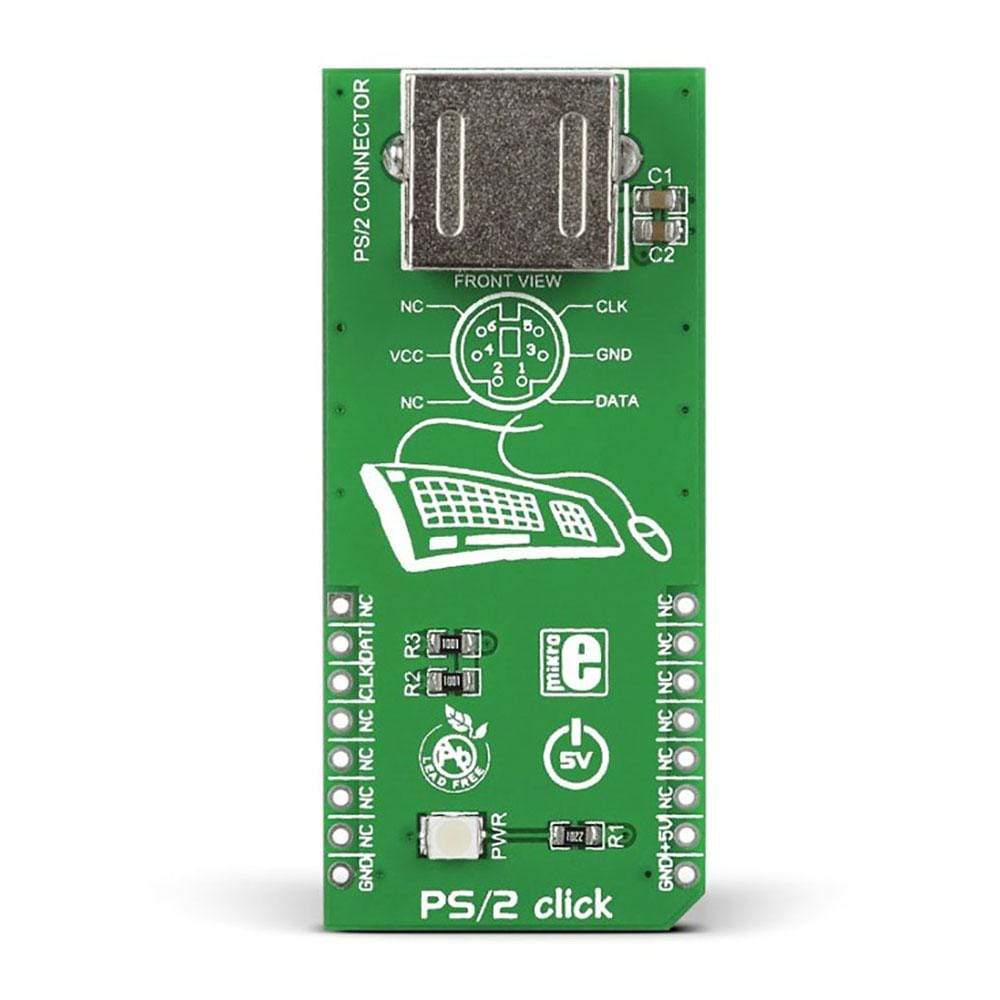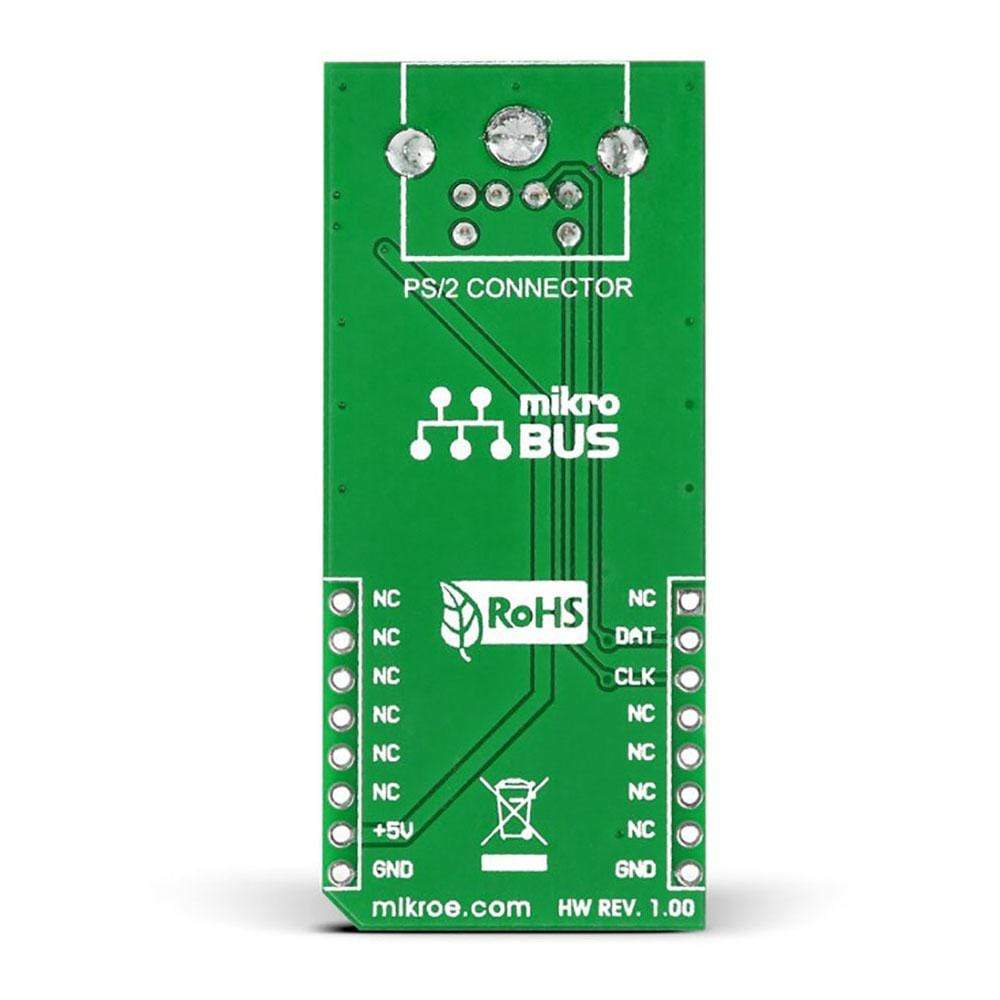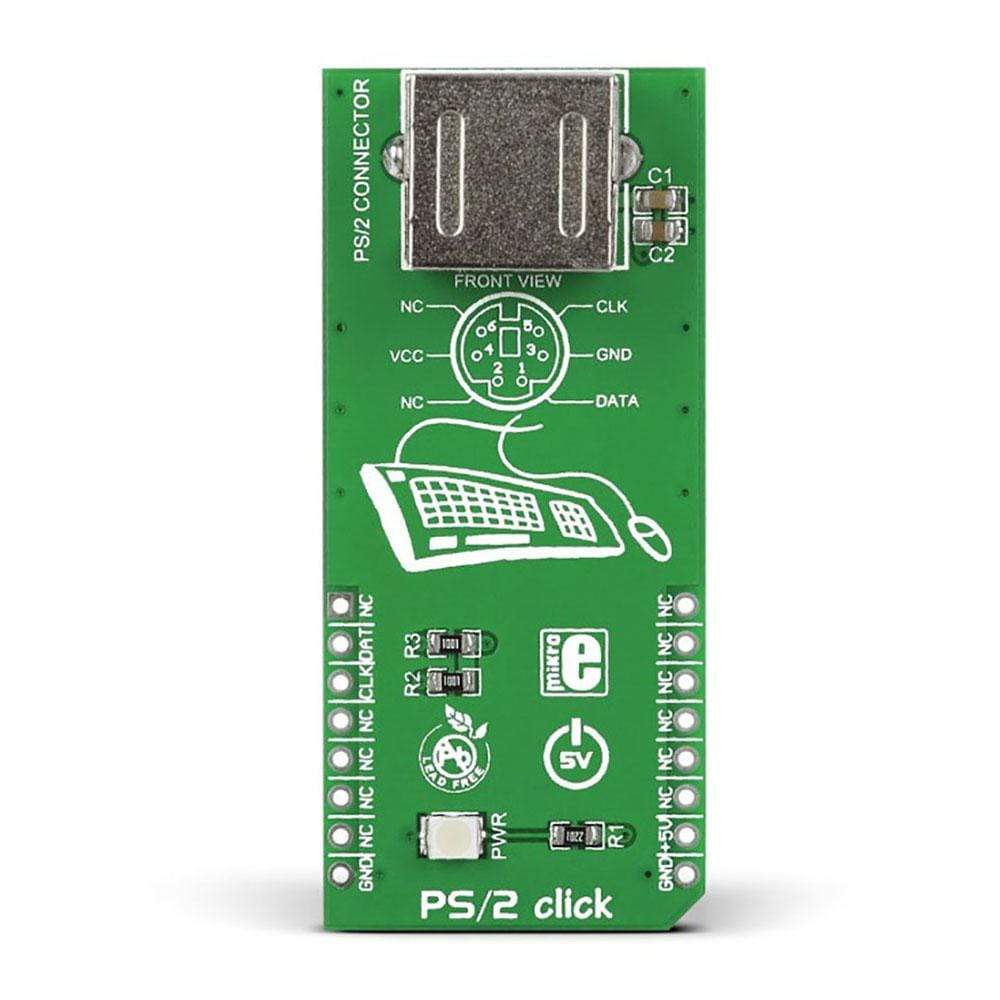
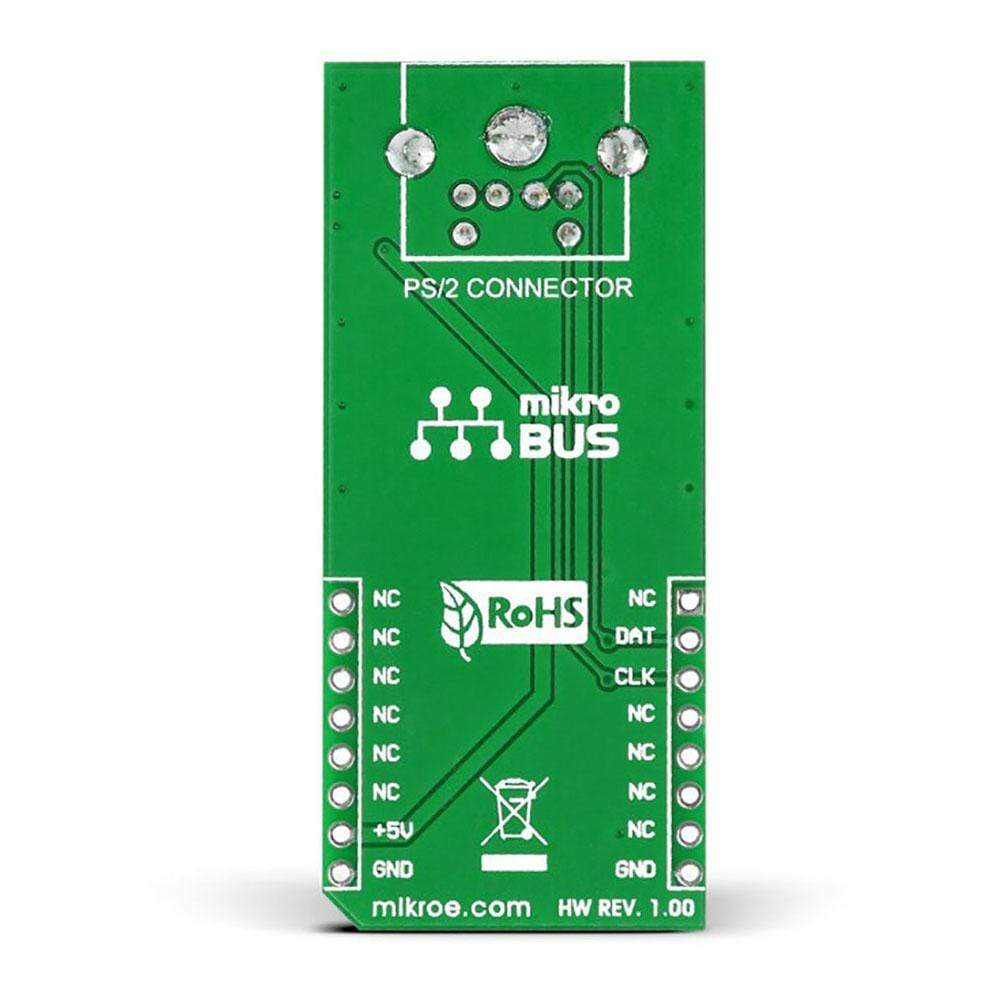
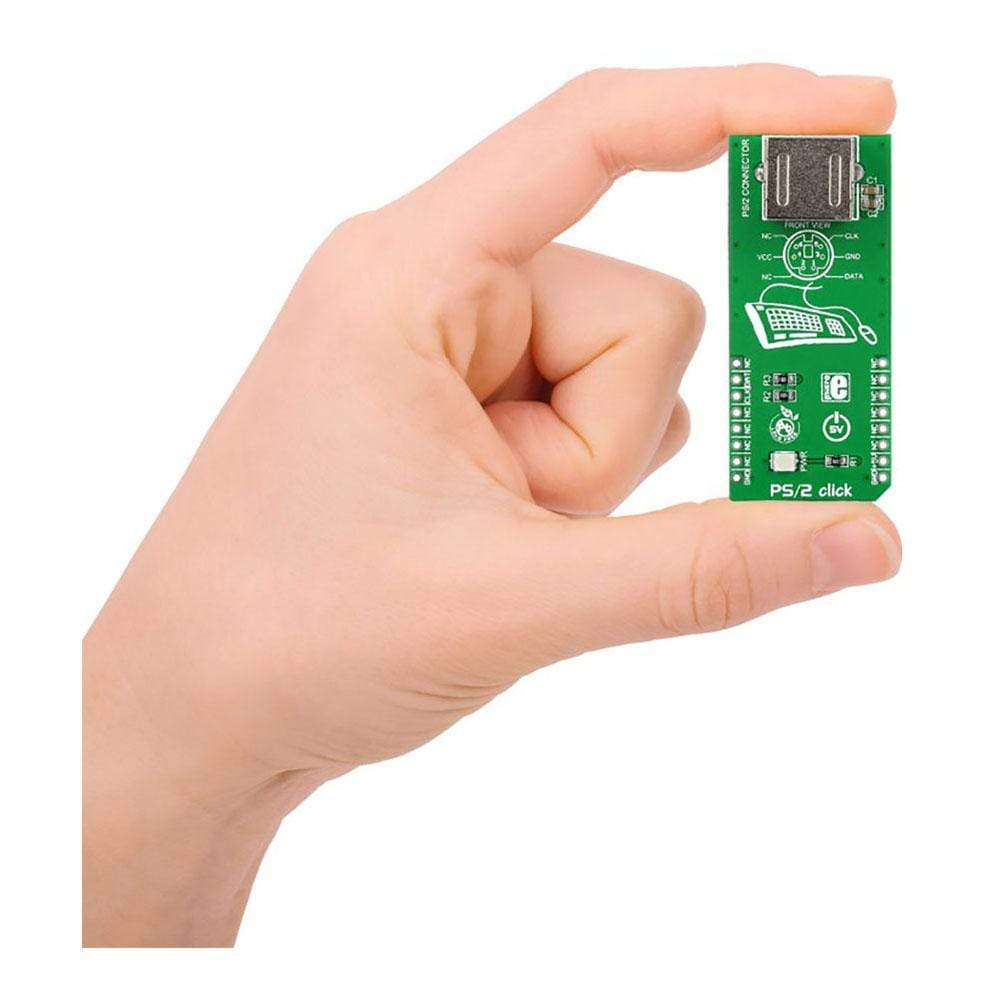
Overview
Introduce keyboard and mouse connectivity to the device with this cost-effective solution - the PS/2 Click Board™.
This add-on board includes a standard 6-pin Mini-DIN PS/2 connector, a MikroBUS pinout, and a power indicator LED. PS/2 Click Board™ features a PS/2 port for connecting a keyboard or mouse to the target device. Although superseded by USB, it is still used as an alternative to the USB connector. It is well-suited for connecting vintage keyboards and mice or certain high-end keyboards for gamers due to its full N-key rollover functionality.
The PS/2 Click Board™ communicates with your target board through MikroBUS RST (data) and CS (clock) pins. It is designed to use a 5V power supply only.
Downloads
The PS/2 Click Board™ is a cost-effective solution for adding keyboard and mouse connectivity to your design. It features a standard 6-pin Mini-DIN PS/2 connector, a mikroBUS™ host socket, and a power indicator LED. PS/2 click communicates with the target board through mikroBUS™ RST (data) and CS (clock) pins. It's designed to use a 5V power supply only.
PS/2 Connector
The PS/2 Click Board™ has a PS/2-style 6 pin mini-DIN connector used for connecting some keyboards and mice to a PC compatible computer system. It was irst introduced by IBM way back in 1987. It works on a serial, synchronous and bidirectional communication protocol.
Full N-Key Rollover
The PS/2 Click Board™ is used in certain high-end keyboards, especially for gamer keyboards as it supports n-key rollover. This means that each key is scanned entirely independently by the keyboard hardware, and thus, allowing the high-end keyboards to handle any number of simultaneous keystrokes.
Why PS/2 over USB
Though superseded by USB, PS/2 connectors are still used. The PS/2 connected keyboards are faster, and have slightly shorter effective scan intervals than their USB counterparts. PS/2 supports full n-key rollover, whereas USB keyboards can handle typically two to six keys at a time.
| General Information | |
|---|---|
Part Number (SKU) |
MIKROE-1576
|
Manufacturer |
|
| Physical and Mechanical | |
Weight |
0.035 kg
|
| Other | |
Country of Origin |
|
HS Code Customs Tariff code
|
|
EAN |
8606015075167
|
Warranty |
|
Frequently Asked Questions
Have a Question?
Be the first to ask a question about this.

